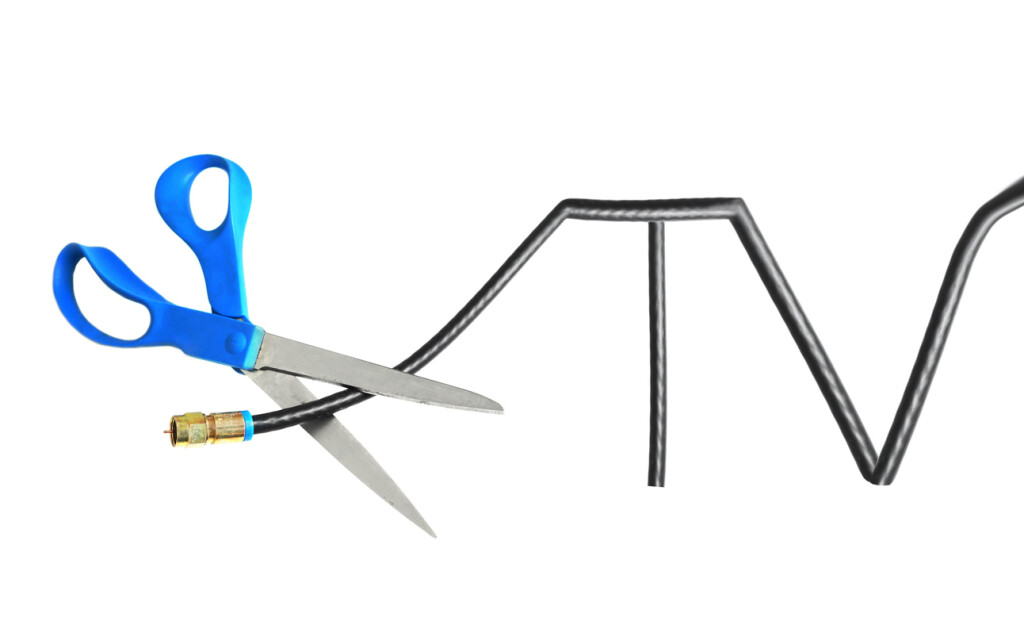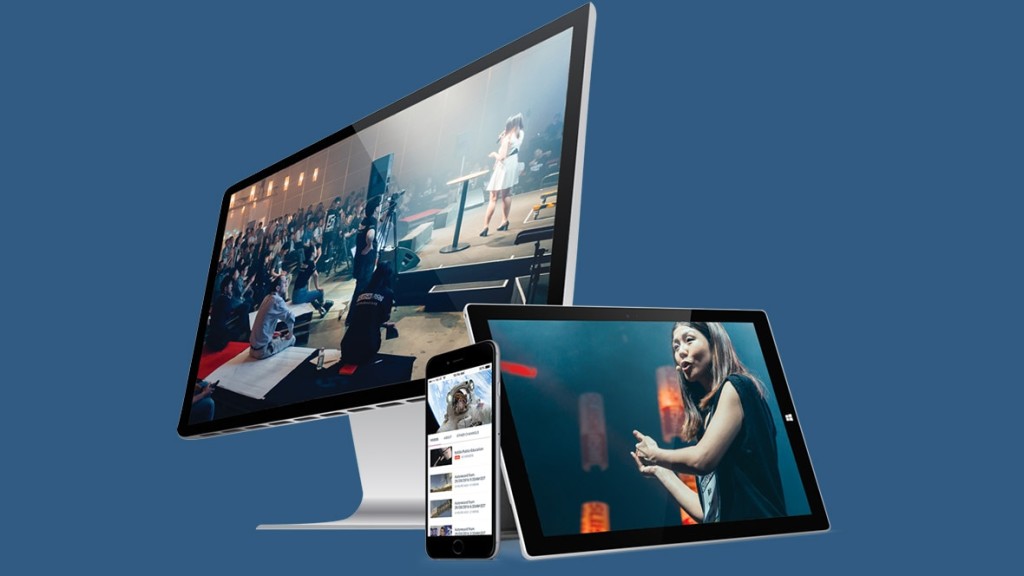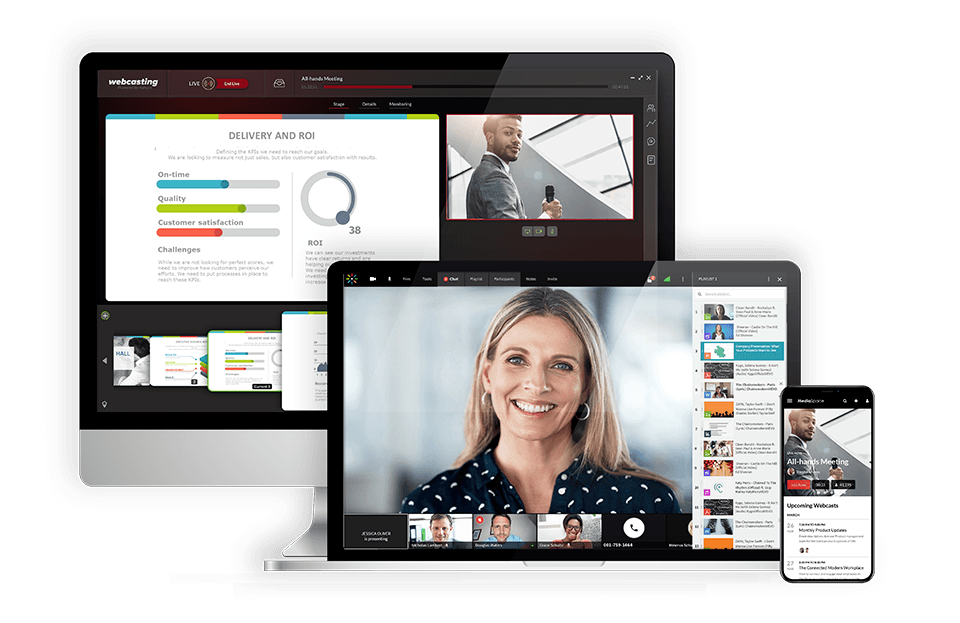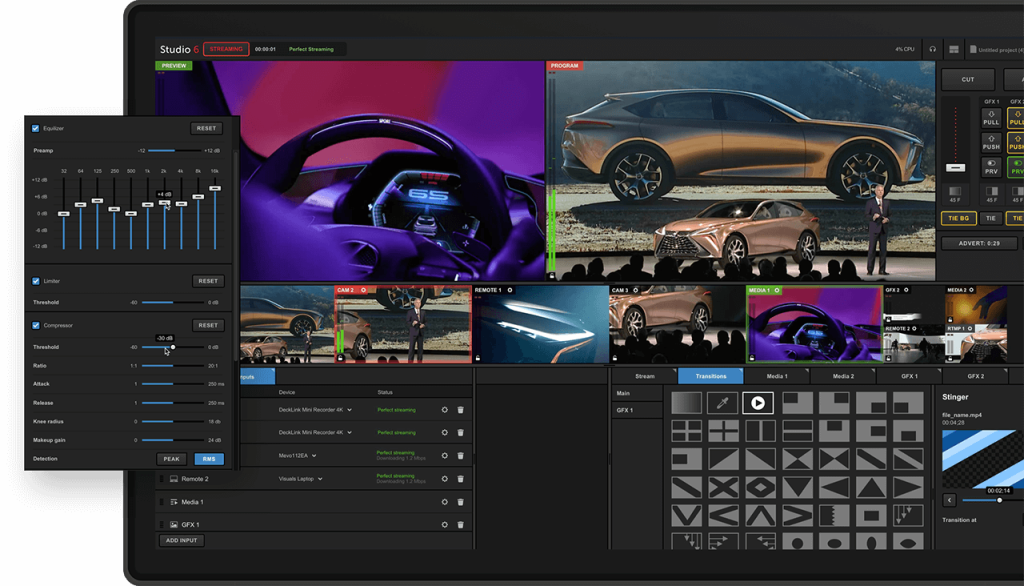What is the Best Video Live Streaming Solution for TV Stations?
The TV industry is changing rapidly. After more than a half-century of dominance, traditional TV broadcasts are fading in popularity.
Starting in 2015, young millennials (ages 14-25) began watching more video on digital devices than on television. One poll found that 59 percent of respondents prefer live videos online vs live TV. This trend is only accelerating since then.
In response, many TV stations are shifting to the use of a video live streaming solution for over-the-top live broadcasting.
In this article, we will focus on how TV stations can make that switch. From there, we’re going to review some of the key features that television broadcasters need in a live streaming platform. Then, we’ll compare 5 top video live streaming solution options.
This post reflects the most accurate information as of October 2020.
Table of Contents
- Staying Ahead of “Cord-Cutting”
- How to Broadcast Live TV Over the Internet
- Key Features for TV Stations Broadcasting Over-the-Top
- Top 5 Video Streaming Solution of TV Stations
- Conclusion
Staying Ahead of “Cord-Cutting”

As people are cutting the cable cord, TV stations are shifting to live video streaming on their website. This is being done in multiple different ways.
There are many technical decisions to be made regarding distribution channels, access rights, bitrates, technical formats, and so on.
The use of internet-connected Smart TVs is rising rapidly, but people are also watching on phones, computers, tablets, and other devices.
Many TV stations are making the wise decision to use professional streaming solutions to access server distribution networks so that they don’t have to create servers of their own.
This approach has many advantages. For example, it offloads responsibility for maintenance, security, staffing, upgrades, equipment purchasing, monitoring, and other duties. This reduces the cost and complexity of operations, allowing you to focus on business decisions and content.
Let’s talk about how TV stations can transition to OTT live streaming with the help of a professional streaming solution.
How to Broadcast Live TV Over the Internet

Learn how to broadcast live TV over the internet in five simple steps. Start with a plan and end up with a professional live stream.
1. Plan and Strategize
Creating an online television network is a big undertaking. You can’t just start your first stream and expect everything to fall into place. You need to create a strategic plan to set yourself up for success.
Establish your goals and create the plan from there.
Do you have an existing television station and you want to move online? Figure out the appropriate way to transition your audience to your new platform.
Starting your OTT Live TV station from scratch? Identify what sort of content you’d like to create and who you’d like to reach, and move forward logically.
Be very intentional with every aspect of your plan
2. Choose a Streaming Solution
When it comes to professional broadcasting, a live streaming solution is practically essential. This sort of platform makes streaming easy since theta re typically equipped with everything you need for embedding video players, monetizing content, hosting content, and more.
Several factors play into choosing a streaming solution. We will come back to the top five streaming solutions for TV stations that are setting up OTT live streaming and how to determine which features you need.
3. Buy Equipment

If you are transitioning from a traditional TV station to an online TV channel, you likely have most of the equipment required for OTT broadcasting. However, if this is not the case for you, there are a few investments you need to make.
Professional broadcasting requires professional equipment. You’ll need a camera and microphones to start out. We recommend using a 4K camera for television-grade streaming. As for a mic, a simple lapel microphone should do the trick.
Depending on your camera, you may also need a capture card. We recommend discussing this with a specialist where you purchase your camera so they can point you in the direction of the one that is best suited for your camera.
You’ll also need a laptop or computer to run your streaming solution. Since you’re streaming over-the-top, you need a reliable internet connection.
An encoder is also an essential tool for live streaming. You can choose from either a hardware or software encoder. If you have the budget, it is a good idea to get a hardware encoder when streaming at the TV level.
In addition to the essential equipment, it’s a good idea to invest in lighting equipment and accessories that will take your stream to the next level. Tripods and other stabilizing will help enhance the quality of your stream.
4. Run Some Tests
There is no room for major mistakes when streaming live. Conduct several trial runs with your equipment and software setup to make sure everything is working properly.
As you conduct the test runs, make note of where you may need added support during the real stream. Take note of what batteries need to be charged beforehand, what equipment will need an outlet, and any things that you should have a backup of (camera, wires, converters, etc.)
5. Promote Your Channel
If you are transitioning from a traditional broadcast television channel, you can start promoting your online network on commercials or segments during your regular broadcasting.
Many in this position are slowly transitioning to OTT streaming, so you could tease content on your television broadcast and point viewers to your website to learn more.
You can also promote your new online content to your social media network. Create content with CTAs leading to your website. Based on your target audience, you may want to run paid ads in addition to your normal content.
6. Start Streaming
Once you’ve completed steps one through five, you’re ready to start streaming. If you’re streaming with Dacast, create a live channel, and click “Start Stream.”
Key Features for TV Stations Broadcasting Over-the-Top

When it comes to choosing a video live streaming solution, there are a variety of options available. You must learn how to differentiate between them. This means assessing the features necessary for your streaming needs and the associated costs.
Let’s look at a few of the key features that we’ll use to compare our top 5 videos live streaming solution.
API Access
An API (Application Programming Interface) provides professional integration that’s essential for TV stations. Video APIs allow you to create custom video portals, mobile apps, and more.
APIs also allow you to easily integrate new web publishing alongside traditional broadcast feeds without having to invest in new infrastructure.
The best part of APIs is that they put the power in your hands. They allow you to customize your broadcasting experience in terms of what’s happening on the backend and the video player that is viewer-facing.
Monetization Tools
Another key factor for many TV stations is monetization. Some studies report that more than a third of professional broadcasters monetize their OTT content via subscription models.
Another method is pay-per-view. This monetization method is common these days and is often used in the online video industry for premium content.
The third common monetization method is advertising. This is very common at TV stations of all sorts. Online advertising is typically implemented via a video player API plus an ad-serving system like VAST or VPAID.
Look for a streaming solution that supports these monetization tools.
Security
Professional broadcasters need to protect their content, especially since piracy costs the U.S. economy more than $20 billion per year, and you don’t want to be part of that statistic. Make sure your streaming solution offers a robust suite of security features to ensure private content remains private.
These security features could include:
- HTTPS delivery
- Secure paywall
- Password protection
- Referrer and geographic restrictions
Bandwidth Cost
The final feature we’ll look at here is bandwidth cost. TV stations generally broadcast 24/7 using high-quality video streams. This means a higher bitrate, which leads to larger data consumption.
TV broadcasters can suck down a lot of bandwidth, which means that reducing per-gigabyte bandwidth costs is an important factor in keeping costs in check.
Top 5 Video Streaming Solution of TV Stations
Now that we have a list of key features, let’s examine how some of the top video live streaming solution options compare to one another.
Given that we’re focused on TV broadcasters here, we’ll focus on high-end features on the top-tier plans.
1. Dacast

Dacast is a unified streaming solution that offers hosting for both live and on-demand video content. It is loaded with the tools TV broadcasters need for professional-grade streaming.
Our platform is a major player in the professional broadcasting arena because each of our plans is packed with tremendous value. The Dacast platform is very easy to use and is perfect for broadcaster of any level of expertise.
API Access
Dacast’s RESTful video API provides full, programmatic access to every feature of the service. Comprehensive documentation makes it easy to use the API to create custom web apps, video portals, mobile apps, integrated workflows, and more.
This feature is currently on pause since Dacast is currently in the process of revamping our platform. However, API will be available once again in October 2020.
Monetization Tools
Dacast has a built-in paywall that supports subscriptions and pay-per-view. It also supports external paywall providers such as Cleeng and InPlayer.
Advertising monetization is supported as well. Monetization is included with all plans.
Security
Features for security on the Dacast platform include password protection, geographic and domain restrictions, payment security, tokenized access, HTTP delivery, and more.
These security features are available with all plans.
Bandwidth Cost
TV stations are most likely to be more interested in Dacast’s multiple live streaming pricing plans.
The Developer plan is ideal for newcomers with 100 GB of bandwidth, 50 GB of storage, at just $39 per month billed annually.
Business users will likely want to use the popular Event plan, which includes 6,000 GB of bandwidth with 50 GB of storage for $63 per month billed annually.
The Scale plan includes 2,000 GB with 1,000 GB of storage for $188 per month billed annually.
We also have custom plans if your needs extend beyond those three plans. Please check out our bandwidth calculator to discover the recommended plan for your needs.
2. IBM Cloud Video

IBM is notorious as a leader in the tech industry, so it is no surprise that its Cloud Video solution falls within the top 5 live streaming solutions for TV.
This American streaming solution has been on the market since 2007.
API Access
IBM Cloud Video includes a “Channel API” that provides full programmatic access. This allows users to easily create mobile and web apps, integrate workflows, and more.
The IBM Cloud Video API is also a RESTful API.
Monetization Tools
IBM Cloud Video’s Enterprise plans support monetization via a subscription model. Advertising monetization can be integrated via API.
Security
The IBM Cloud Video platform includes many security features. These include password protection, embed controls, and more. Security features are limited to cheaper plans.
Bandwidth Cost
The IBM Cloud Video business provides basic pricing plans for small and medium-scale streamers. These plans offer varied functionality for $99 to $999 per month.
At $999 per month, you get 5,000 ad-free viewer hours. Additional bandwidth costs 20 cents per hour.
Enterprise plans add additional features. This includes the Streaming Manager online video platform. However, all customized plans do incur additional costs, and these contracts must be custom negotiated.
3. Brightcove

Brightcove is another major player in the video streaming game. This is one of the more advanced streaming solutions, so it requires a bit of broadcasting experience.
API Access
The Brightcove platform includes many different APIs. This includes a video API, and other APIs allowing you to extend, customize, and integrate the platform in a variety of ways.
Brightcove includes monetization tools, but only for advertising. This feature is only available with high volume plans.
Security
Brightcove’s security features include content protection, domain, restrictions, IP restrictions, authentication tools, and more.
Bandwidth Cost
All plans from Brightcove have custom pricing. Please contact their sales department for bandwidth costs.
4. Kaltura

Kaltura is an open-source streaming solution that is known for its customizability.
API Access
Kaltura provides a range of APIs, including a video platform API, to help you integrate your desired features.
Monetization Tools
Kaltura doesn’t have built-in monetization tools, but you can integrate external tools for monetization.
Security
Kaltura’s security tools include various encryption options, watermarking, DRM, domain restrictions, geo-restrictions, and more. You can also host the service locally if you wish to avoid a cloud-based option.
Bandwidth Cost
Kaltura uses pay-as-you-go pricing. Prices start at $0.17 per GB for outbound traffic, plus $0.25 per minute live streamed. Plays are also priced at $0.001 per play. There are additional costs for storage, transcoding, and so on.
For more information on pricing, please contact the Kaltura sales department.
5. Livestream

Livestream is owned by Vimeo and it is essentially the “premium” version of Vimeo. It is geared towards more advanced broadcasters, making it a great option for TV broadcasting.
API Access
Livestream offers video playback API and content management API.
Monetization Tools
Monetization options, including subscriptions and advertising support, are included with Enterprise plans as well (at $999/month and up).
Security
Security features include privacy settings, password protection, embed restrictions, registration portal support, and more. However, most tools are restricted to the $999/month and up plans.
Bandwidth Cost
Livestream includes unlimited bandwidth, viewers, storage, and playback for Enterprise users. Enterprise plans start at $999 per month and may cost more, depending on the features you need and the nature of your business.
Conclusion

OTT live streaming is the future of TV broadcasting. More and more people are cutting the cord, so TV stations are wise to start live streaming over the internet so that they can ride through that transition with their existing audience.
Different television broadcasters will naturally have different goals, meaning they will need access to different features. We encourage you to make a list of the features you need to reach your goals and compare them to the features available in each platform you’re looking at.
It is also a great idea to take advantage of free trials to see how streaming platforms work in action.
You can try our platform risk-free for 14 days. Sign up today to get started. No credit card is required.
For exclusive offers and regular live streaming tips, you can also join our LinkedIn group. As always—thank you for reading, and good luck with your live streams!
 Stream
Stream Connect
Connect Manage
Manage Measure
Measure Events
Events Business
Business Organizations
Organizations Entertainment and Media
Entertainment and Media API
API Tools
Tools Learning Center
Learning Center Support
Support Support Articles
Support Articles